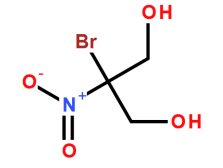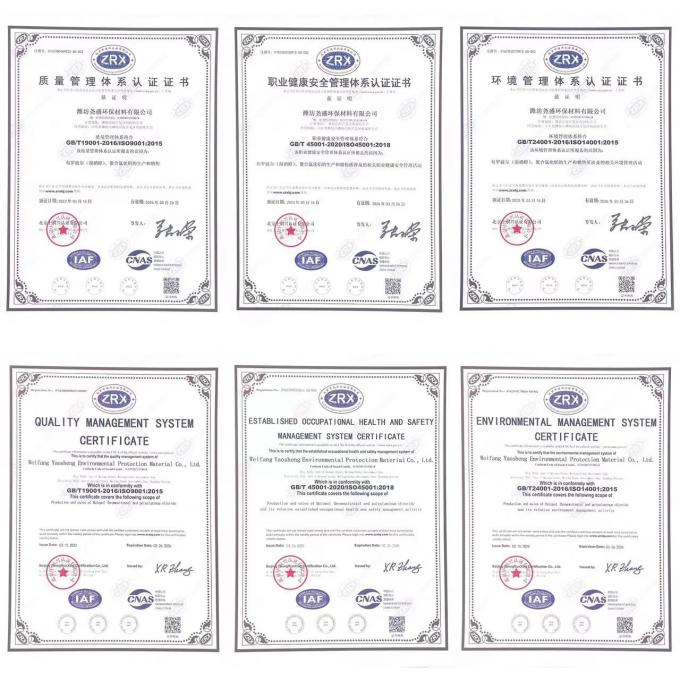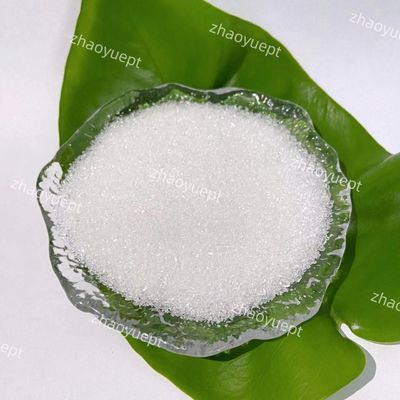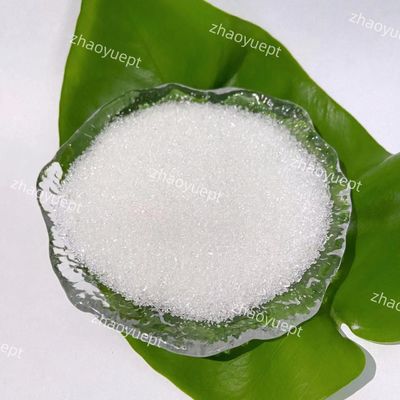Biocide Bronopol BNPD Leather Preservative C3H6BrNO4 CAS No 52-51-7
| Place of Origin: | WEIFANG,CHINA |
| Brand Name: | ZHAOYU |
| Certification: | ISO 9001; ISO 45001; ISO 14001 |
| Model Number: | 99.0% |
| Minimum Order Quantity: | 500 kgs |
| Price: | Negotiatable |
| Packaging Details: | 25kg Cardboard barrel; 500kg Container bag |
| Delivery Time: | 15 work days |
| Supply Ability: | 2000 Tons/Year |
|
Detail Information |
|||
| Place of Origin | WEIFANG,CHINA | Brand Name | ZHAOYU |
|---|---|---|---|
| Certification | ISO 9001; ISO 45001; ISO 14001 | Model Number | 99.0% |
| Another Name:: | Bronopol、BNPD | Chemical Name:: | 2-Bromo-2-Nitro-1,3-Propanediol |
| Molecular Formula:: | C3H6BrNO4 | Molecular Weight:: | 199.988 |
| CAS NO.:: | 52-51-7 | Einecs NO.:: | 200-143-0 |
| Content:: | 99.0% Min | Moisture:: | 0.5% Max |
| Appearance:: | White To Light Yellow Crystalline Powder | Melting Point:: | 129-132℃ |
| Stability:: | Slightly Hygroscopic | Highlight: | Biocide Bronopol BNPD,CAS No 52-51-7 Bronopol Preservative,Bronopol BNPD CAS No 52-51-7 |
Product Description
It is an organic compound with the molecular formula C3H6BrNO4. It is white to light yellow crystalline powder at room temperature, odorless and tasteless, easily soluble in water, ethanol, propylene glycol, insoluble in chloroform, benzene, etc. It is mainly used as a preservative and bactericide for cosmetics, which can effectively prevent and control a variety of plant pathogenic bacteria.
Bronopol is mainly used as a preservative and bactericide. It is added to the processing of shampoos, balms and creams and other cosmetics. The concentration in cosmetics is 0.01%-0.02%. It can also be used in detergents and fabric treatment agents. as a bactericide. It can effectively control a variety of plant pathogenic bacteria. Cotton seeds can be treated to prevent and control cotton black arm disease and bacterial scabrous blight caused by Xanthomonas cotton, and have no phytotoxicity to cotton. It can also be used for rice bakanae disease. The recommended concentration is 800-1000mg/L. It is also used in industrial circulating water, paper pulp, coatings, plastics, cosmetics, wood, cooling water circulation systems, and sterilization, anti-mildew, anti-corrosion, and algae killing for industrial purposes.
2-Bromo-2-Nitro-1,3-Propanediol (Bronopol)

| Product Name | 2-Bromo-2-Nitro-1,3-Propanediol (Bronopol) |
| Molecular Formula | C3H6BrNO4 |
| Molecular Weight | 199.988 |
| CAS NO. | 52-51-7 |
| Appearance | White to light yellow crystalline powder |
| Content | 99.0% min |
| Melting Point | 129-132℃ |
| Moisture | 0.5% max |
The minimum inhibitory concentration (MIC) of bronopol to some microorganisms
| Microorganism | MIC/(mg/L) | Microorganism | MIC/(mg/L) |
|
Staphylococcus aureus NCIB 9518 |
25 |
Staphylococcus epidermidis NCTC 7291 |
25 |
|
Streptococcus faecalis NCTC 8213 |
25 |
Escherichia coli NCIB 9517 |
25 |
|
Klebsiella obstetrics NCTC 418 |
25 |
Proteus vulgaris NCTC 4635 |
25 |
|
Pseudomonas aeruginosa NCTC 6750 |
25 |
Pseudomonas fluorescens NCIB 9046 |
25 |
|
Salmonella typhimurium NCTC 74 |
12.5 |
Desulfovibrio NCIB 8301 |
12.5 |
|
Candida albicans ATCC 10231 |
1600 |
Saccharomyces cerevisiae NCYC 87 |
3200 |
|
Chaetomium globosa IMI 45550 |
800 |
Aspergillus niger ATCC 16404 |
3200 |
| Trichoderma viride | 6400 |
Storage and transportation: Store in a cool, dry and ventilated place. It is strictly forbidden to mix with strong oxidants, strong alkalis, strong acids, food, mixed storage, and mixed transportation.
Regulations
① European Chemicals Agency (ECHA): All active substance/product type combinations for which an application for approval has been submitted under Directive 98/8/EC (BPD) or Regulation (EU) No. 528/2012 (BPR): PT-2 ( Disinfectants and algicides not directly used on humans or animals), PT-6 (preservatives for products during storage), PT-9 (preservatives for fibers, leather, rubber and polymeric materials), PT-11 ( liquid refrigeration and processing system preservative), PT-12 (slimecide), PT22 (corpse and sample embalming fluid). The application for the biocide bronopol is currently under review.
② China's 2015 version of the "Safety and Technical Specifications for Cosmetics" stipulates that when bronopol (Bronopol) is used in cosmetics, the maximum allowable concentration is 0.1% to avoid the formation of nitrosamines.





